
From benthos - dominated to zooplankton - dominated mode:
two faces of the Arctic fjords in the changing world
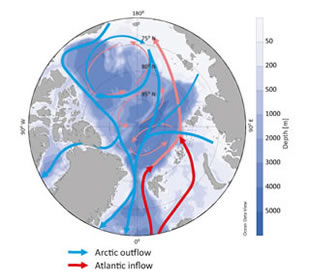
Spitsbergen is located between 76 and 81°N in the European Arctic at the edge of the Arctic Ocean. Hydrographic conditions in the west Spitsbergen fjords are shaped by the dynamic interactions between water masses of local and regional origin (Svendsen et al., 2002; Cottier et al., 2005; 2007; Tverberg and Nost, 2007; Nielsen et al., 2008), with two main currents involved. On the shelf, cold and relatively fresh Arctic Water originating from the Barents Sea is transported northward along the coast by the Sørkapp Current while outside the shelf warm and saline Atlantic Water originating from the Norwegian Sea flows in the same direction in the form of the West Spitsbergen Current (Cottier et al., 2005; Walczowski et al., 2005).
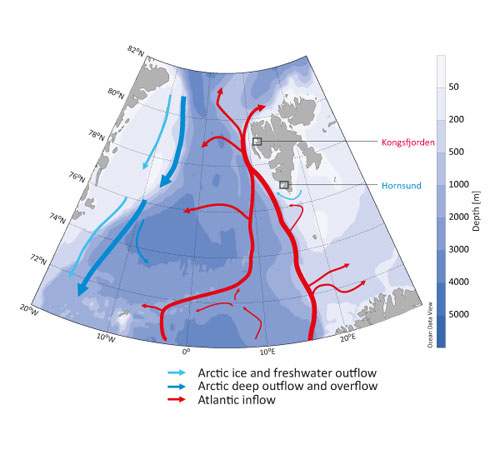
Different bathymetry at the mouths of the fjords, tidal currents and wind conditions are the main factors responsible for differences in hydrographic conditions between fjords and adjacent shelf waters on the west coast of Spitsbergen. Hydrographic conditions in Hornsund are mainly influenced by the cold Arctic Water coming from from the Barents Sea, whereas Kongsfjorden is to a larger degree under the influence of the warm Atlantic Water (Svendsen et al. 2002; Cottier et al. 2005, Nielsen et al., 2008).
The concept is based on previous observations from different years and fjords basins (published and unpublished data) 2-3 times higher total zooplankton abundance (A) in Atlantic influenced Kongsfjorden in comparison to Arctic Hornsund (Gluchowska et al., in prep)significantly lower meiofauna (B) and soft- bottom macrozoobenthos (C) abundances in Kongsfjorden compared with Hornsund (Kotwicki et al. 2004; Wlodarska-Kowalczuk et al., 2005; Wlodarska-Kowalczuk and Weslawski, 2006; Grzelak and Kotwicki 2011)
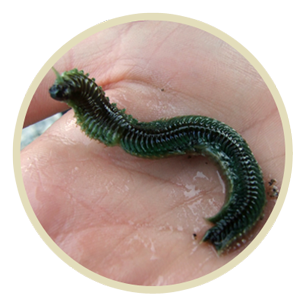
Different bathymetry at the mouths of the fjords, tidal currents and wind conditions are the main factors responsible for differences in hydrographic conditions between fjords and adjacent shelf waters on the west coast of Spitsbergen. Hydrographic conditions in Hornsund are mainly influenced by the cold Arctic Water coming from from the Barents Sea, whereas Kongsfjorden is to a larger degree under the influence of the warm Atlantic Water (Svendsen et al. 2002; Cottier et al. 2005, Nielsen et al., 2008).
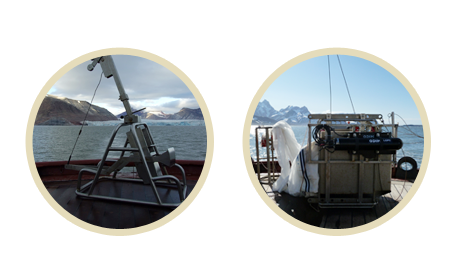
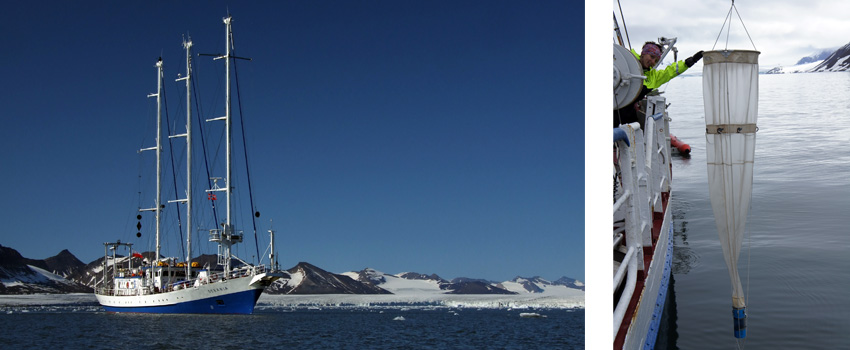
Sampling campaign in summer 2013 will be carried out at the board of r/v Oceania
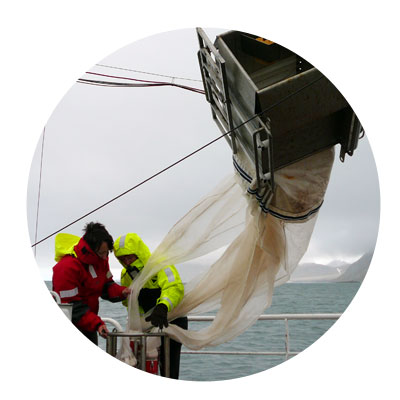
Sampling program will include detailed investigation of:
Under constraction